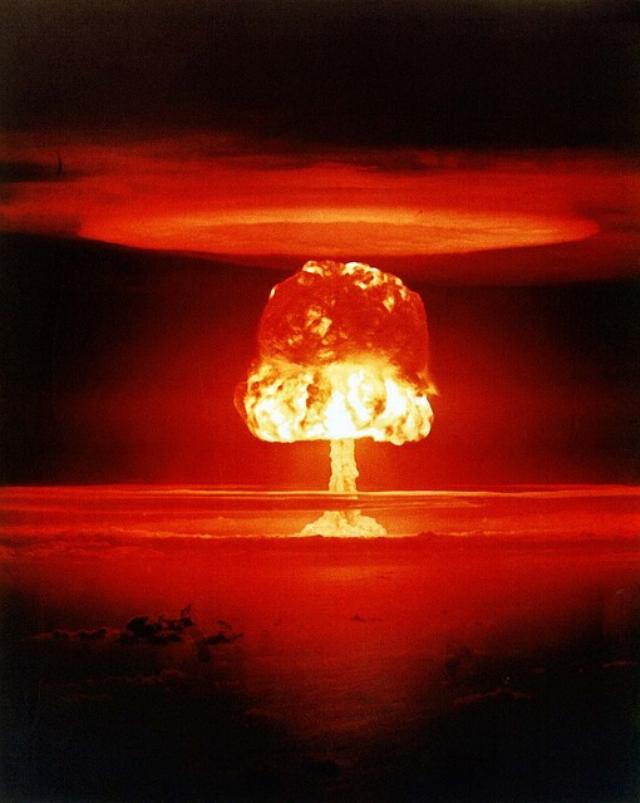79 years ago the atomic bomb brought peace
Years ago on a winter vacation in Hawaii I took a break from fun in the sun to visit the Pearl Harbor National Memorial; from a brief blurb on the exhibit’s webpage, we find this:
From Engagement to Peace
At the Pearl Harbor National Memorial, learn about one of the most pivotal moments in US history: the attack on Pearl Harbor, and the subsequent entry of the United States into World War II.
The memorial commemorates the unprovoked deadly attack on a U.S. base by Japan’s imperial forces on December 7, 1941, “a date which will live in infamy,” proclaimed then-president Franklin D. Roosevelt (D).
Hawaii has since become a favored vacation spot of Japanese citizens who diligently tour most of the islands’ famous sights with their Japanese tour guides, but they were notably absent from the Pearl Harbor memorial; very few ever of them visit, my tour guide explained.
In contrast, many Americans visit Hiroshima, where 79 years ago today on August 6, 1945, after all other desperate efforts by winning Americans to end the deadly war that followed Pearl Harbor against the losing Japanese, who were suicidally determined to continue the deadly war, then-president Harry S. Truman, after much soul searching and some opposition, authorized dropping the atomic bomb on the Japanese city of Hiroshima in an effort to spare more American and Japanese lives. From Truman’s own words:
We are now prepared to obliterate more rapidly and completely every productive enterprise the Japanese have above ground in any city. We shall destroy their docks, their factories, and their communications. Let there be no mistake; we shall completely destroy Japan's power to make war.
It was to spare the Japanese people from utter destruction that the ultimatum of July 26 was issued at Potsdam. Their leaders promptly rejected that ultimatum. If they do not now accept our terms they may expect a rain of ruin from the air, the like of which has never been seen on this earth. Behind this air attack will follow sea and land forces in such numbers and power as they have not yet seen and with the fighting skill of which they are already well aware.
When the stubborn Japanese still wouldn’t surrender, Truman authorized a second bomb on Nagasaki. The Japanese finally surrendered, sparing not only the lives of American armed forces personnel but also the further destruction of Japan. After Japan’s capitulation, the U.S. occupied Japan and reformed its government, turning it into the prosperous, very peaceful country it is today. However, (some) Americans, forgetting their U.S. history, visit Hiroshima and its “peace” memorial, to apologize to some unrepentant Japanese. An example of this mixed message is the statement. delivered by former Chicago mayor Rahm Emanuel and now U.S. Ambassador to Japan on the 79th anniversary of Hiroshima, just a few days back:
‘For nearly 80 years, the city of Hiroshima has been an enduring symbol of peace and possibility, and its people a powerful symbol of healing and hope. Emerging from the ashes of tragedy and suffering, the city is a shining beacon of resilience and unity for the entire world,’ said Ambassador Emanuel.
‘It is both my honor to attend the Hiroshima Peace Memorial Ceremony and my duty to ensure that we never forget the lessons the city and its citizens teach us. With each visit I make to Hiroshima, I feel evermore determined to continue to strengthen the bonds of friendship and alliance between the United States and Japan. Far from forgetting the past, we can use it to motivate and inspire us in our shared pursuit of peace and prosperity in the region and across the world.’
Hopefully the Japanese will now visit the Pearl Harbor Memorial. Hopefully.
Hopefully Americans will learn the lessons of peace through strength. Hopefully.
May the memories of World War II veterans remain eternal.

Image: Free image, Pixabay license.
FOLLOW US ON
Recent Articles
- Deep Dive: The Signal Chat Leak
- Mark Steyn’s Reversal of Fortune
- Where We Need Musk’s Chainsaw the Most
- Trump Is Not Destroying the Constitution, but Restoring It
- The Midwest Twilight Zone and the Death of Common Sense
- Hijacked Jurisdiction: How District Courts Are Blocking Immigration Enforcement
- Transgender Armageddon: The Zizian Murder Spree
- Jasmine Crockett, Queen of Ghettospeak
- The Racial Content of Advertising
- Why Liberal Judges Have a Lot to Answer For
Blog Posts
- April 2nd: Liberation Day and Reconciliation Day don’t mix
- Red crayons and hospital gowns
- The Paris Climate Agreement was doomed from the start
- Well excuse me, I don't remember
- Two new revelations about the Signal leak, along with two theories
- Big Tech’s Invisible Hand: How Google and Meta manipulate our elections
- New report: Netherlands is now euthanizing minors
- Tantalizing tidbits: Five news stories about leftists, and sea lions, acting aggressively
- Rockets to Roses: Israel’s bizarre trade cycle with Aza
- Fort Knox? Gold cams!
- There is no birthright citizenship for illegal aliens
- Turn off the phone. Close the laptop.
- Nine reasons Democrats are doomed to irrelevance
- Wagner College should restore Trump’s honorary degree—and set a national example against cancel culture
- The Signal Scandal was a nothingburger, but the WSJ takes the opportunity to attack Vance






